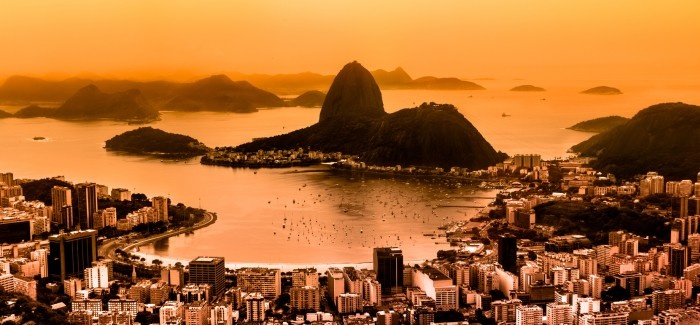**Update: get the latest list of top universities in Russia here - based on the 2016 edition of the QS University Rankings: BRICS.**
Intrigued by the idea of studying in the world’s largest country, and one of its fastest growing economic powers? Discover the top universities in Russia, based on the new QS University Rankings: BRICS, a ranking of the top 100 universities in the five BRICS countries, developed in collaboration with Russian news agency Interfax.
Russian capital Moscow is home to many of the country’s leading universities, and is a popular destination for students due not only to its choice of institutions, but also its vibrant and diverse nightlife, dynamic cultural scene, rich history and seemingly endless range of things to see and do. Famous for its lavish buildings and affluent lifestyles, the city also has an edgier, underground culture, while the iconic red brick towers of the Kremlin continue to attract a stream of tourists from around the world.
Saint Petersburg, Russia’s second largest city, offers a different view of the country, with its networks of canals and Italian baroque architecture giving it more of a Western European feel. Since its founding, it’s been known as a city of new ideas, creativity and cultural exchange, and remains one of Russia’s most cosmopolitan urban centers.
Other major student cities in Russia include Novosibirsk and Tomsk, both of which are also home to one of the 10 top universities in Russia, featured below…
Lomonosov Moscow State University
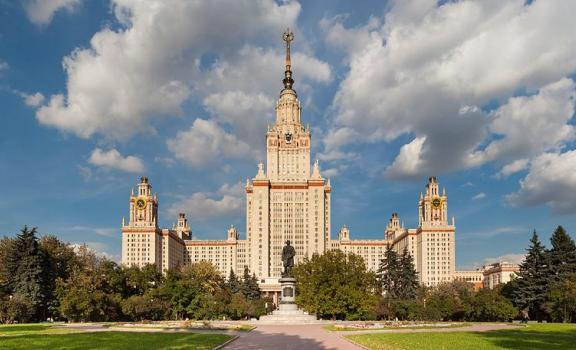 First in our list of top universities in Russia is Lomonosov Moscow State University. Established in 1755, it’s among the oldest universities in Russia and also the largest, with more than 40,000 undergraduate and postgraduate students. Most of the university’s faculties are situated approximately five kilometers from Moscow city center on the Sparrow Hills, overlooking the Moskva River and among the highest points in the city.
First in our list of top universities in Russia is Lomonosov Moscow State University. Established in 1755, it’s among the oldest universities in Russia and also the largest, with more than 40,000 undergraduate and postgraduate students. Most of the university’s faculties are situated approximately five kilometers from Moscow city center on the Sparrow Hills, overlooking the Moskva River and among the highest points in the city.
Ranking 3rd overall in the QS University Rankings: BRICS, Lomonosov Moscow State University scores well across most of the eight indicators used to create the ranking, getting particularly strong scores for academic reputation, faculty-student ratio, employer reputation, international student enrolment and proportion of staff with a PhD. Research remains a relatively weaker area, both in terms of publication rate and influence, and indeed this is a general trend when comparing Russian universities with BRICS institutions as a whole.
Learn more about Lomonosov Moscow State University >
Saint-Petersburg State University
 Claimed by some to be the oldest university in Russia, Saint-Petersburg State University traces its origins back to the earlier Saint Petersburg Academy of Sciences, founded in 1725. It’s slightly smaller than Lomonosov Moscow State University, with just over 32,000 students taught across 20 faculties, offering an impressive selection of cultural and sports facilities as well as proximity to all the attractions of Saint Petersburg. The school itself is situated on the historic yet modern island of Vasilyevsky, which is served by the metro and tram lines.
Claimed by some to be the oldest university in Russia, Saint-Petersburg State University traces its origins back to the earlier Saint Petersburg Academy of Sciences, founded in 1725. It’s slightly smaller than Lomonosov Moscow State University, with just over 32,000 students taught across 20 faculties, offering an impressive selection of cultural and sports facilities as well as proximity to all the attractions of Saint Petersburg. The school itself is situated on the historic yet modern island of Vasilyevsky, which is served by the metro and tram lines.
Ranked 14th in the first QS University Rankings: BRICS, Saint-Petersburg State University shares many of the same strengths and weaknesses as Lomonosov Moscow State University, scoring best for faculty-student ratio, international reputation among academics and graduate employers, proportion of staff with a PhD and international student representation. Again, relatively weaker areas are research production and impact.
Learn more about Saint-Petersburg State University >
Novosibirsk State University
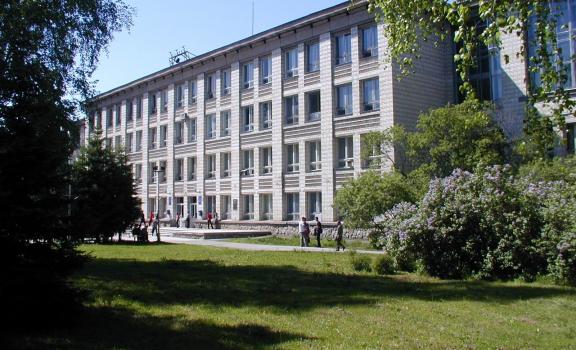 A relatively young institution, Novosibirsk State University was founded in 1959. It’s located about 20 kilometers outside the city of Novosibirsk, the third most populous city in Russia after Moscow and Saint Petersburg. Its student body is relatively small compared to the two universities above, and it offers courses across a wide spectrum of subjects, though particularly known for specializing in sciences.
A relatively young institution, Novosibirsk State University was founded in 1959. It’s located about 20 kilometers outside the city of Novosibirsk, the third most populous city in Russia after Moscow and Saint Petersburg. Its student body is relatively small compared to the two universities above, and it offers courses across a wide spectrum of subjects, though particularly known for specializing in sciences.
Ranked 22nd in the BRICS results, Novosibirsk State University gets its strongest scores for international student ratio and ratio of academic faculty to students – both of which consistently emerge as strong points for the top universities in Russia when viewed in the context of the BRICS group as a whole.
Learn more about Novosibirsk State University >
Bauman Moscow State Technical University
 Russia’s next entry in the BRICS ranking, at 33rd, is Bauman Moscow State Technical University. Another of the country’s oldest universities, and its largest technical university, ‘Bauman MSTU’ has almost 20,000 students, including PhD candidates. It offers a wide range of courses in the fields of engineering and applied sciences.
Russia’s next entry in the BRICS ranking, at 33rd, is Bauman Moscow State Technical University. Another of the country’s oldest universities, and its largest technical university, ‘Bauman MSTU’ has almost 20,000 students, including PhD candidates. It offers a wide range of courses in the fields of engineering and applied sciences.
Like other top universities in Russia, Bauman Moscow State Technical University scores especially well for its ratio of academic faculty to students – in fact it ranks 4th among BRICS universities on this indicator. Another notable strength is its reputation among graduate employers and academics, based on QS’s major global surveys. However, it doesn’t score quite as well as other leading Russian institutes for its proportion of staff with a PhD or international diversity of faculty.
Learn more about Bauman Moscow State Technical University >
Moscow State Institute of International Relations (MGIMO-University)
The Moscow State Institute of International Relations (MGIMO-University), once a part of Moscow State University, was established as an independent institution as of 1944. It has a relatively small enrolment, of around 6,000 students at undergraduate and graduate level, and as its name implies specializes in humanities subjects such as international diplomacy, journalism and law, as well as teaching an impressively diverse selection of languages.
Ranked 37th in the QS University Rankings: BRICS, Moscow State Institute of International Relations again follows the national trend in getting a very strong score for its ratio of academic faculty members to students, while also getting fairly strong ratings in the international reputation surveys. However, its most impressive scores are for percentage of staff with a PhD and international student enrolment – among the BRICS institutions, it ranks 3rd and 12th respectively on these indicators.
Learn more about Moscow State Institute of International Relations >
St. Petersburg State Politecnical University
Another relatively large university, St. Petersburg State Politecnical University has just over 30,000 students enrolled on over 406 undergraduate and postgraduate programs. It has a large campus in St. Petersburg, offering courses across a wide spectrum of subjects, with highest enrolments in engineering subjects, and in courses relating to economics and management.
Ranking 47th in the first BRICS ranking, St. Petersburg State Politecnical University scores particularly well for both faculty-student ratio and percentage of staff qualified to PhD level. It also compares favorably with other BRICS universities for its enrolment of international students, though not so well for recruitment of international faculty.
Learn more about St. Petersburg State Politecnical University >
National Research University – Higher School of Economics (HSE)
Beginning life as a school of economics as recently as 1992, the National Research University – Higher School of Economics (HSE) has very rapidly established a strong reputation – both within Russia and internationally – as a multi-field research university. With a student body of over 20,000, its main campus is in the city of Moscow, but the school has three other campuses in the cities of St. Petersburg, Nizhniy Novgorod and Perm.
In the first edition of the QS University Rankings: BRICS, HSE places at 50th, getting its strongest scores for faculty-student ratio and staff with a PhD (15th and 31st respectively among BRICS universities). It lags behind other top universities in Russia in terms of international student enrolment, but has already been relatively successful in attracting overseas academics.
Learn more about National Research University – Higher School of Economics (HSE) >
Moscow Institute of Physics and Technology State University
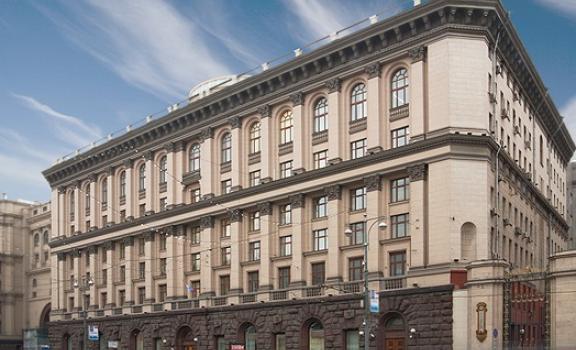 Informally known as PhysTech, the Moscow Institute of Physics and Technology State University specializes in applied mathematics, physics and related subjects and is sometimes referred to as the “Russian MIT”. It has its main campus in Dolgoprudny, a northern suburb of Moscow, with a relatively small student population of just over 5,000.
Informally known as PhysTech, the Moscow Institute of Physics and Technology State University specializes in applied mathematics, physics and related subjects and is sometimes referred to as the “Russian MIT”. It has its main campus in Dolgoprudny, a northern suburb of Moscow, with a relatively small student population of just over 5,000.
Ranked 55th in the first BRICS ranking results, Moscow Institute of Physics and Technology State University joins other top universities in Russia in getting a very strong score for faculty-student ratio, and also fares well in the internationalization indicators, with high proportions of both overseas faculty and overseas students. As for most Russian universities (there are some notable exceptions), its weakest points are the indicators for research papers published per faculty member, and research citations.
Learn more about Moscow Institute of Physics and Technology State University >
Tomsk State University
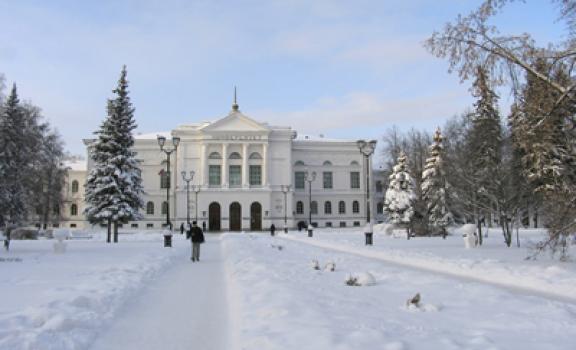 The oldest university in Siberian Russia, Tomsk State University was established in 1888. Today, it has 23,000 students enrolled across 23 departments, in the historic and student-centered town of Tomsk. Like most of the top universities in Russia, it’s been awarded the status of a National Research University, and it boasts some of the most extensive library archives in Russia.
The oldest university in Siberian Russia, Tomsk State University was established in 1888. Today, it has 23,000 students enrolled across 23 departments, in the historic and student-centered town of Tomsk. Like most of the top universities in Russia, it’s been awarded the status of a National Research University, and it boasts some of the most extensive library archives in Russia.
Ranked 58th in the BRICS ranking, Tomsk State University gets its strongest score for its percentage of international faculty, for which it ranks the highest among Russian universities and 28th among BRICS universities overall. It scores almost as well for international student enrolments and for percentage of staff with a PhD, while following the general national trend in getting relatively lower scores for research production and impact compared to other BRICS institutions.
Learn more about Tomsk State University >
National Research Nuclear University (MEPHI)
Founded in 1942, the National Research Nuclear University (MEPHI) is known (as its name would suggest) for its focus on the nuclear industry and teaching in the fields of physics, engineering and mathematics. It’s located in Moscow, close to Kolomenskoye Park, which overlooks the banks of the Moskva River and is home to the royally owned “wooden palace”.
Placing 65th in the first QS University Rankings: BRICS, the National Research Nuclear University (MEPHI) is Russia’s leading light in the international research community: it ranks first among all the BRICS universities for the frequency with which its research papers are cited. Given the strong impact of its research, it’s perhaps surprising that it doesn’t place higher in the global surveys of academics and employers (it’s just outside the BRICS top 100 in both instances). Like other top universities in Russia, it boasts a strong faculty-student ratio, and a good percentage of staff with a PhD.
And the rest…
In addition to the 10 top universities in Russia above, the country also has another nine universities ranked among the BRICS top 100. These are:
Tomsk Polytechnic University (ranked 71st in the QS University Rankings: BRICS)
N.I Lobachevsky State University of Nizhni Novgorod (ranked 74th)
Kazan Federal University (ranked 79th)
Ural Federal University (ranked 84th)
People’s Friendship University of Russia (ranked 86=)
Southern Federal University (SFEDU, ranked 89th)
Voronezh State University (ranked 91st)
National Research University Moscow Power Engineering Institute (ranked 97th)
Far Eastern Federal University (ranked 99th)
Image credits: Dmitry A Mottl; MultiC; Saint-Petersburg; Imperial College; PhysTech; MEPHI.
Want more content like this? Register for free site membership to get regular updates and your own personal content feed.

